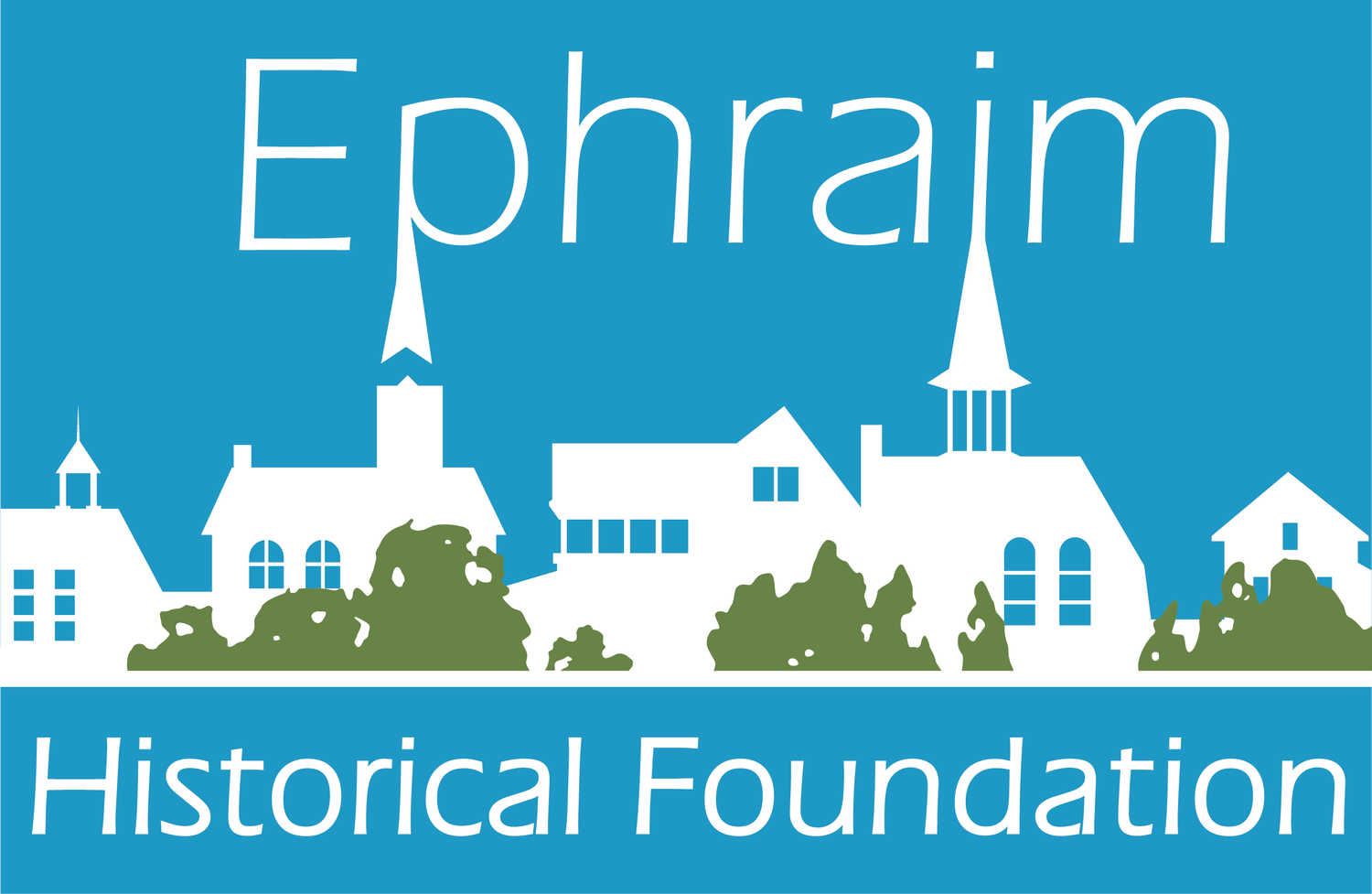Juicy Truths
about the Apple’s Tangy Past
What do a temperance activist, a vegetarian folk hero, and a teacher at Ephraim’s one-room schoolhouse have in common? Apples!
Swiss immigrant plants Door County’s first commercial orchard
Did you know that with the exception of North American crab apple trees 17th century colonists brought apples to North America? Today, 7,500 apple varieties exist worldwide. Local historians credit Swiss immigrant Joseph Zettel with planting Door County’s first commercial apple orchard in 1862. Cherry orchards got going here about thirty years later.
Zettel’s apples were likely bitter and pulpy, but good for making cider. His orchard was four miles north of Sturgeon Bay along Hwy 57. Folks today know the location as The Farm. Zettel’s neighbors, hearty pioneers staking a claim on land indigenous people ceded to the U.S. government (Chicago Treaty 1833, Indian Removal Act 1830), were also planting apple trees.
Visit the 1853 Iverson House on Moravia Street to see the ancient apple tree in the back yard. Perhaps Ephraim village founders Reverend Andrew and Laura Iverson planted it there long ago!
An old, gnarly apple tree still stands in the east lawn of the Iverson House. Have you seen it? This tree provided fresh fruit at a time before refigeration because apples could be stored over the winter. Whether baked, sauced, buttered, or dried they tasted delicious. And the peels? They didn’t go to waste. People used apple peels to make cider!
A notorious fruit
In pioneer times, clean drinking water was often scarce so cider was a go-to beverage. Fermented or “hard cider” was common, too, and for some imbibing became a problem. Enter Kansan temperance activist Carrie Nation (1846-1911). Her husband died from severe alcoholism just two years after they married. Hard cider and apples used to make it became a target for her and others concerned about the drink’s potential harm to families. According to author Keven McQueen, Nation described herself as “a bulldog running along at the feet of Jesus, barking at what He doesn’t like” and claimed a divine ordination to promote sober living by destroying bars. Though she was lampooned in cartoons after taking a hatchet to a bar, Carrie Nation was also known for great generosity towards children, women, and prisoners who had fallen on hard times.
The Honeycrisp, pictured right, is one of 2,500 varieties grown in the US. Many of us remember when it was first introduced around 1991. This tangy, crunchy apple, was developed in our neighboring state of Minnesota.
Photo by Tad Dukehart
The apple gets a makeover
By the end of the 19th century, it was time for the apple to have a “PR” makeover. It helped that orchardists were developing new, flavorful varieties. Folksy apple cures were beginning to show up in print, too. Rustic Speech and Folk-lore (1913), for example, recorded this proverb: “Ait a happle avore gwain to bed, An’ you’ll make the doctor beg his bread.” We know the saying today as “An apple a day keeps the doctor away.” Soon apples were again in high favor. Boys and girls across the nation, many living in rural areas with apple trees in their backyards, brought the luscious red fruit to teachers. It was an inexpensive gift to give and a healthy, practical gift to receive.
By the mid-twentieth century, Ephraim children were picking (or buying) apples for teachers at commercial orchards like the one owned by Eddy Valentine on Town Line Road or at the Fardigs orchard on Highway Q. Perhaps they bought an apple harvested from the Anderson’s family orchard on Moravia Street from the Anderson Store. Customers paid the Andersons about 11 cents a pound for the juicy fruit in 1930. Today you can expect to pay between 63 cents and $2.54 a pound. For an interesting read about the Anderson orchard, track down a copy of Door County Almanak No. 2 and read Charles Peterson’s essay “Aslag’s Orchard.”
Who was Johnny Appleseed?
Some of the apples landing on teachers’ desks in the US originated from trees planted by John Chapman (1774-1845). Chapman, Johnny Appleseed, was a trained orchardist who planted hundreds of trees (not seeds as folklore claims) in the Ohio River Valley. He was a vegetarian. Later in life, Chapman became an itinerant preacher known for powerful sermons. Disney got hold of his story in 1948. Who remembers the Johnny Appleseed song released in the film Melody Time?
Oh, the Lord is good to me.
And so I thank the Lord
For giving me the things I need
The sun and the rain and the apple seed
The Lord is good to me
How about singing this song, or teaching it to your grandkids while baking apple pie this fall? Challenge the kids to make up new lyrics that have special meaning for your family. Bon appetit!
Sources
Marvin Lotz. Discovering Door County’s Past, 1994
Fred Johnson, Editor. Door County Almanak No. 2 Orchards, 1986.
Keven McQueen."Carrie Nation: Militant Prohibitionist". Offbeat Kentuckians: Legends to Lunatics, 2001.
This 2020 blog was updated in August 2023.



